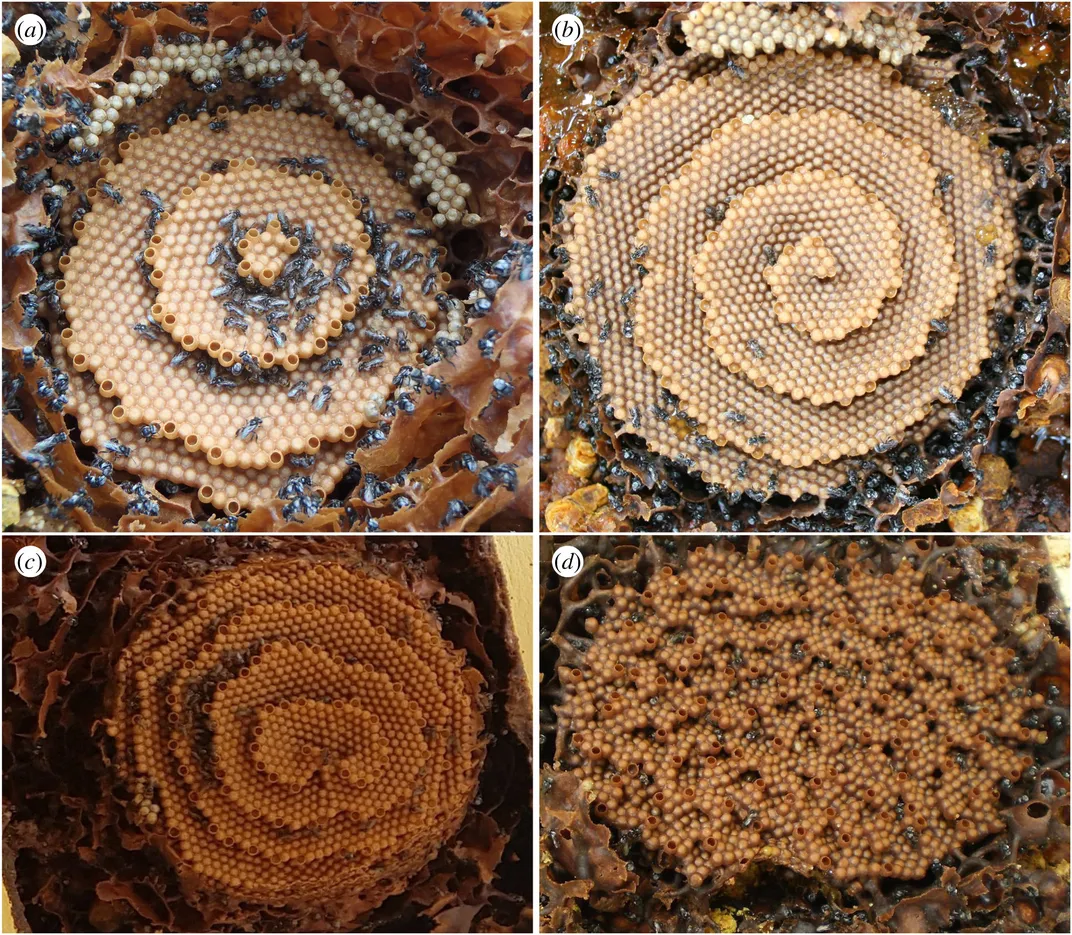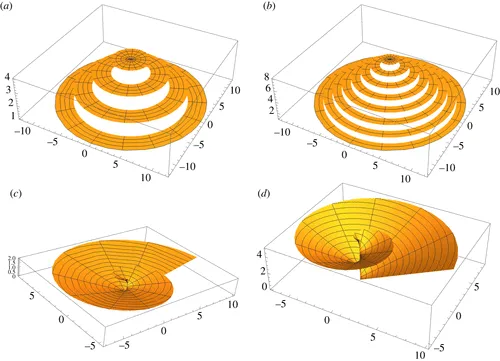Scientists Crack the Mathematical Mystery of Stingless Bees’ Spiral Honeycombs
The waxy architectural wonders seem to grow like crystals
/https://tf-cmsv2-smithsonianmag-media.s3.amazonaws.com/filer/2a/ce/2ace554d-4e31-496a-8778-ac7f21be981f/bee-hive-2_royal-society_photo.jpg)
The same mathematical model that explains how crystals grow can also explain how tropical stingless bees build honeycombs in spiraling, multi-terraced shapes, according to a study published on Wednesday in the Journal of the Royal Society Interface.
Bees from the genus Tetragonula specialize in sophisticated feats of architecture built from hexagonal beeswax cells. Each individual cell is both the landing spot for an egg and a building block for structures that can grow up to 20 levels high, Brandon Specktor reports for Live Science. Stingless bees’ hives can come in several shapes, including stacks of circles in a bulls-eye, a spiral, a double spiral, and a group of disorderly terraces.

How and why bees build the complex shapes without any blueprints has perplexed scientists, but the researchers show that each individual bee might be following a few simple rules.
"Each bee is basically following an algorithm," Julyan Cartwright, an expert in mathematics of nature at the Spanish National Research Council, tells Live Science. When each bee follows the same rules in a different part of the hive, a pattern emerges overall.
And Cartwright had seen the same rules before, he adds. The pattern also appears in mother-of-pearl mollusks, which Cartwright studied before shifting to bees. And both follow a pattern—first studied in the 1950s—of how crystals form in a spiral.
"One of us - Antonio Osuna, showed me some pictures of the bees combs and I was hooked," Cartwright tells ScienceAlert’s Jacinta Bowler. "From then on it was a case of working out how these patterns appear in the case of the bees, and we were able to take ideas we had developed from looking at crystal growth and at how mollusks make nacre (mother of pearl), both of which show very similar spiral and target patterns to the bees' ones."
Bees all use hexagonal building blocks, which have the shortest perimeter of shapes that fit together tightly, making them the most efficient use of wax. But Cartwright and his co-authors found that a computer model of stingless bees could imitate their natural counterparts by following two simple rules.
The digital beehive started with one cell, and then worker bees had two options: Either they could add another cell on the side that the hive was growing, but slightly up from the others; or they could stack their cell on top of the lower layer, as long as it was sufficiently far from the edge. The computer model turned out the same hive shapes as the bees create in nature.

The researchers changed variables like the randomness of new additions to a growing edge in order to produce different final patterns. In crystals, they write, this randomness is analogous to impurities, which cause different shapes. In bees, the randomness affects the digital insects’ skills at laying hexagons flat with their neighbors.
There are 31 species of Tetragonula bees, native to Oceana. And the bees are often differentiated by the pattern of hive that they create. The researchers suggest that the details of individual worker bees’ rules might be genetically encoded to create the complex structure that their species is best at.
Entomologist Tim Heard told Elaina Zachos at National Geographic in 2018 that the exact benefit of the spiral shape to the bees is still unknown, but it might improve airflow through the hive or might help the queen bee better navigate her home.
But at its core, the computer model shows that the bees’ patterns are still based on the essential chemical rules that govern all matter on Earth.
“Crystal growth and bee comb construction are two systems operating within very different spheres of science,” the researchers write in their paper. “So what leads to the similar structures? This is the beauty of the applicability of mathematics to nature.”